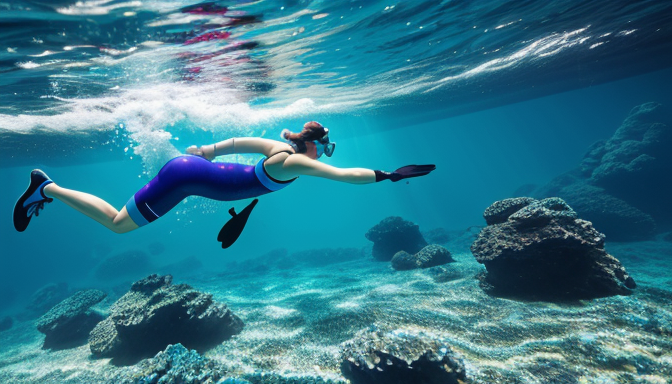This article explores various techniques and strategies to enhance swimming speed and efficiency, providing insights for swimmers of all levels to improve their performance in the water.
When it comes to swimming, mastering your stroke technique is like having the secret sauce to a delicious recipe. Whether you’re gliding through the water in freestyle, backstroke, breaststroke, or butterfly, each stroke has its own nuances that can make or break your speed. Have you ever noticed how some swimmers seem to fly effortlessly while others struggle? The difference often lies in their technique. For instance, in freestyle, maintaining a streamlined body position and efficient breathing can drastically reduce drag. In backstroke, focusing on a strong kick and proper arm rotation helps in maintaining speed. Each stroke requires specific adjustments, so it’s essential to practice diligently and seek feedback. Remember, even the best swimmers continuously refine their techniques!
Now, let’s talk about strength and conditioning. Think of your body as a powerful engine; the more efficiently it runs, the faster you swim. Incorporating strength training into your routine can significantly enhance your performance. Exercises targeting your core, shoulders, and legs are particularly effective. For example, pull-ups and planks can build upper body strength, while squats and lunges can boost your leg power. A well-rounded training plan should include:
- Resistance training (2-3 times a week)
- Cardiovascular workouts for endurance
- Flexibility exercises to prevent injuries
By dedicating time to these workouts, you’ll not only swim faster but also enjoy a more enjoyable experience in the water. So, are you ready to dive in and transform your swimming game?
Improving Stroke Technique
When it comes to swimming, stroke technique is your secret weapon. Whether you’re a beginner just dipping your toes in the water or a seasoned swimmer looking to shave off those precious seconds, mastering the fundamental strokes—freestyle, backstroke, breaststroke, and butterfly—can make all the difference. Think of your stroke as the engine of a car; if it’s not running smoothly, you won’t get far!
Let’s break it down a bit. For freestyle, focus on keeping your body streamlined and your kicks consistent. A common mistake is letting your hips drop, which can create drag. When you’re gliding through the water, imagine you’re a torpedo—efficient and fast!
Next up is the backstroke. The key here is to keep your head still and your arms rotating in a smooth, rhythmic motion. Picture yourself floating on your back, gazing at the clouds—this will help you maintain a relaxed posture while maximizing your stroke efficiency.
Moving on to breaststroke, remember that timing is everything. Your pull, breathe, and kick should be synchronized like a well-choreographed dance. You want to glide through the water, not fight against it. And finally, the butterfly—this stroke requires power and precision. Focus on your core and make sure your movements are fluid; think of a dolphin gracefully cutting through the waves.
In summary, refining your stroke technique can lead to significant improvements in your swimming speed. By mastering these strokes, you’ll not only enhance your performance but also enjoy the process of learning and growing as a swimmer. So, are you ready to dive in and make a splash?

Strength and Conditioning for Swimmers
When it comes to swimming, speed isn’t just about technique; it’s also about strength and conditioning. Imagine your body as a finely-tuned machine, where every part works in harmony to propel you through the water. To master strokes like freestyle, backstroke, breaststroke, and butterfly, you need to build a solid foundation of strength. This is where targeted strength training comes into play.
Incorporating a variety of exercises into your routine can enhance your power and endurance. For instance, core strength is vital for maintaining body position in the water. Think of your core as the anchor that keeps your body streamlined. Exercises such as planks, Russian twists, and medicine ball throws can significantly improve your core stability. Additionally, don’t overlook the importance of upper body strength. Pull-ups, push-ups, and resistance band exercises can mimic the movements of swimming, helping you develop the muscles you need for each stroke.
Here’s a quick overview of effective strength training exercises for swimmers:
| Exercise | Focus Area |
|---|---|
| Planks | Core Stability |
| Pull-Ups | Upper Body Strength |
| Squats | Leg Power |
| Medicine Ball Throws | Explosive Strength |
Moreover, integrating conditioning workouts such as interval training can elevate your cardiovascular fitness, allowing you to swim faster for longer periods. Think of it as building your engine—without a powerful engine, even the best techniques won’t get you far. So, whether you’re a beginner or a seasoned swimmer, focusing on strength and conditioning can be the game-changer you need to boost your speed and efficiency in the water.
Frequently Asked Questions
- What are the best techniques to improve my swimming speed?
To boost your swimming speed, focus on refining your stroke technique, optimizing your breathing pattern, and maintaining a streamlined body position. Think of it like a well-oiled machine; every part needs to work in harmony for maximum efficiency!
- How important is strength training for swimmers?
Strength training is crucial! It helps build muscle endurance and power, enabling you to swim faster and longer. Imagine your muscles as the engine of a car; the stronger the engine, the faster you can go!
- Can I improve my speed without changing my stroke?
Absolutely! While stroke technique is vital, you can also enhance your speed by improving your conditioning and flexibility. Think of it as tuning up your car; even if the engine is solid, better tires and alignment can make a world of difference!
- How often should I practice to see improvements?
Consistency is key! Aim for at least 3-4 practice sessions per week. Just like learning to ride a bike, the more you practice, the smoother and faster you’ll become!